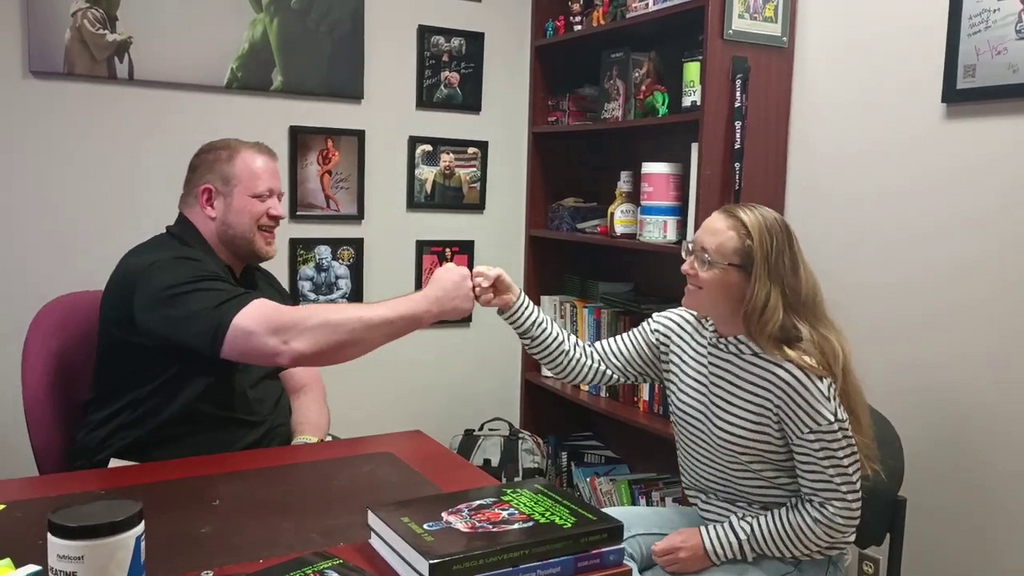In my recent interview with Dr. Lee Doernte, he mentioned “poor programming.” He was referring to a workout plan for athletes that is not based on sound training principles or is otherwise not appropriate for the training age, sport, time in the training cycle, or current life circumstances of an athlete. If you have not yet watched that video, go back and take a look. The training principles that I talked about with Dr. Doernte are called periodization. Periodization models are based on several “laws” that guide the informed coach’s prescription of just the right amounts of volume, intensity, sport specific skills, and sport psychology skills on any given day of the training cycle. Additionally, there are numerous periodization models that can be more appropriate for one kind of sport than another or at one particular phase of an athlete’s career than another. Some models are simply not for beginners; however, others are employed as the athlete reaches their genetic potential. Some models are better for power sports, while others are better for endurance training. All of these models build toward a peak or multiple peaks depending on the performance needs of the athlete. All of these models prescribe rest in addition to work because the “rest” phases are when your body is super-compensating. This is when your body becomes stronger in order to handle the workload that originally “tore it down.” Mechanisms throughout the body that detect fatigue and a need for repairs and replenishment throughout the body signal to the body that there is a deficit that requires provision. Even our hormones can be sensitized or desensitized depending on how we train. Nevertheless, fatigue is not always visible or discernable to a new athlete or young person or an inexperienced coach. Neural fatigue is something we account for heavily in track, field, and weightlifting, but it does not present itself in stiff, crunchy muscles, bruises, bumps, or tears; it takes more subtle discernment to identify.
Typically, college and elite coaches use periodization with their athletes. They also have a separate strength and conditioning coach who writes a periodized plan for their athlete’s weight training. When these plans are monitored carefully and customized based on the daily needs of the athlete, they are highly effective. As you can imagine, it is hard to implement this type of training with large groups of people but not impossible.
I started officially running on a track team when I was 13 years old. By the time I could drive at 16, I was running year-round and have done so until this day. I’ve taken a 6-week break 3 times during the last 23 years. I coached myself and individual adult athletes post college until 2021. During that time, I learned and implemented a lot of periodization principles through trial-and-error, experience, and reading. I first learned these principles from Greg McMillan who has a master’s degree in exercise physiology and coached runners in major international competitions from 1996 to 2012 in addition to 14 national champions. He taught me different types of periodization as it relates specifically to distance running. Those principles overlap all types of running and all sports. Periodization was covered again in my USATF coaching certification. The distance portion was covered in much less detail than what I learned with Greg, but the training was valuable because I learned how to extend my knowledge of programming more appropriately to all levels of hammer, shot, discus, javelin, pole vault, long jump, triple jump, high jump, sprints from the 60 meters to 800 meters, mid-distance events 1500 meters to 10,000 meters, hurdle events, and even race walking. I learned more in depth programming principles while working on my master’s degree in sports and exercise science. In this class, I’m learning how to program weight training for every sport. My knowledge of good training principles has been years in the making through experience, education, and training certifications, and with new studies coming out monthly, there is a lifetime of learning and implementing new strategies ahead.
How do we compare to other teams? There are a minority of high school coaches that may have specialized training, but it is not required in Texas. In other states, public school budgets do not provide for paid coaches at the junior high level at all. As a result, people with graduate degrees in movement-related fields typically work as athletic directors, college or elite coaches, strength and conditioning coaches, sport psychology consultants, or go on to physical therapy or athletic training school. There are a few rare gems in the high school coaching world who have an instinct for coaching and who learned these principles like I did in the beginning, through trial and error and experience, but according to the 2023 State of Play Report, “It’s getting harder to find coaches and fewer of them [are] trained.” In fact, the report shows that the vast majority of youth sport coaches are underqualified which is a scary thing to us parents considering that their instruction can have serious long-term implications for our children’s well-being.

(If you are curious, difficult parents was a top ranked reason for people leaving coaching according to both athletic directors and volunteer sports organizations with football coaches two times more likely to feel beleaguered by parental criticisms of coaching performance and the performance of other athletes. I am thankful that this year’s team has none of those parents! Thank you for being an awesome team all the way around.)
Much of youth sport advice or information is coming from sports equipment manufacturers who want as many kids in as many sports as possible so that they can sell as much gear as possible. Information also comes from private coaches whose paycheck depends on kids specializing in their sport or activity year-round. None of these sources are looking out for the best interest of your child, your family finances, or the well-being of your family. Often, they are not driven by malicious intent but by misinformation and the need to survive.
Good News for Parents: The good news is that there is better information available that releases your family from sports pressures and lets the game be a game again. A growing number of people are advocating for more wholesome youth sports. I’m not talking about “everybody gets a trophy” mentality; that is not the camp I live in. I’m more about making stronger and faster athletes the smart way – the way that sticks for life; the way that reduces pain and obesity related diseases. Let’s do this in a way that develops people into champions – life champions; the kind of champions that strive for hard work, integrity, and fair play on all the fields of life. When we first seek what matters, winning takes care of itself. It is possible, and it makes all the money and time spent in sports worth it.
In the meantime, if you want to chat more about appropriate training strategies or anything else on your mind, contact me!
~Coach Melissa


